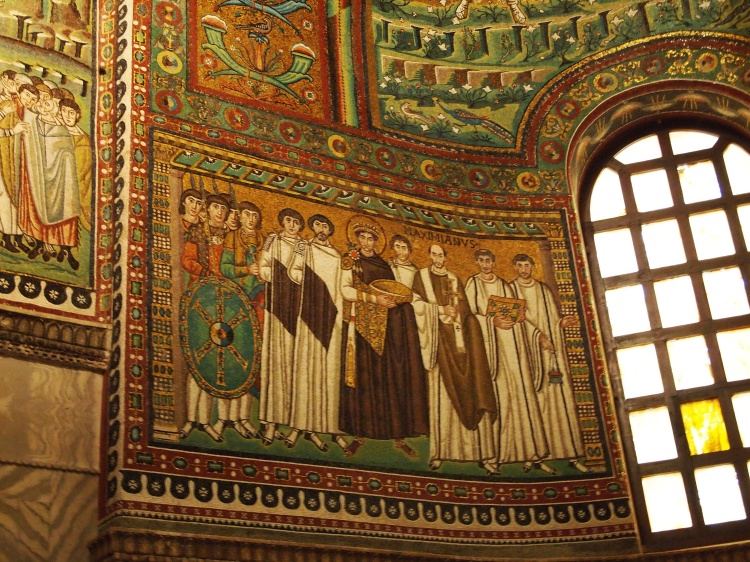Last Friday, I visited a beautiful seaside town in Italy’s Emilia-Romagna region: Ravenna. Its mosaics – many in the ancient Byzantine style, though some go back even further – are among the most famous in the world.

Our first stop was the Basilica of Sant’Apollinare in the nearby town of Classe, just outside Ravenna. This 6th century mixture of Romanesque and Byzantine architecture sports a large, open nave with an incredibly detailed and colorful apse. It’s decorated with – you guessed it – mosaics. While we were there, we listened to a brief introduction to early Christianity, the Roman Empire (Ravenna was once its capital!) and the art of the mosaic.



Then, we made our way into historic Ravenna, where we split into smaller groups to explore a host of attractions. My group first stopped at the Neonian Orthodox Baptistery, the oldest structure in the city. It’s so old (think built-in-the-300s-old) that the ground has since risen 10 feet above where it was at the time of original construction. While our tour guide said that seeing it from 10 feet lower would have made it seem more impressive, I think the current viewpoint gave us the chance to see the details better.
There, we learned about the traditional eight-sided blueprint that most baptisteries followed back then, the time period that this one was constructed in, and the symbolism behind the scenes depicted on the ceiling.


In the middle, John the Baptist (usually depicted wearing a scruffy animal-fur cloth) is baptizing Jesus.


Throughout history, it was traditional for a newly-baptized Christian to go directly from the baptistery to the church to celebrate their welcome to Christianity. We followed the trail of these ancient believers and headed to the Basilica of San Vitale.
While both Sant’Apollinare in Classe and San Vitale were built around the same time (and sponsored largely by the same donor) San Vitale is far more grand. The interior is more round than rectangular and its supported by massive stone pillars. A specific type of red granite porphyry found only in Egypt and impossible to cut without a diamond saw decorates parts of the facade and interior. The central area is divided into levels, once used to separate the genders during worship. A beautiful fresco (painted in the 1700s) adorns the ceiling in the nave. However, the real reason we came was waiting for us up at the front.











Next we made our way to the Mausoleum of Galla Placidia. The mosaics inside have been so well-preserved that they’ve barely been retouched at all. While the body of Galla Placidia (the daughter of a Roman emperor) is no longer inside the mausoleum, it is widely believed that the bodies of her family members are.


Last on our agenda was a stop at the Basilica of Sant’Apollinare Nuovo in Ravenna. It’s seen its fair share of renovations in its 1500 years of existence, but what remains is still stunning.


We wrapped up the day with some delicious pasta and gelato and headed back to Florence. By the time we made it to the buses, we were happy to welcome the prospect of a two-hour nap time – it was such a full day! We learned so much, ate some great Italian food, and got to see some of the most beautiful art in the world. Ravenna is definitely one of Italy’s hidden gems.
Gelato Count: 20

